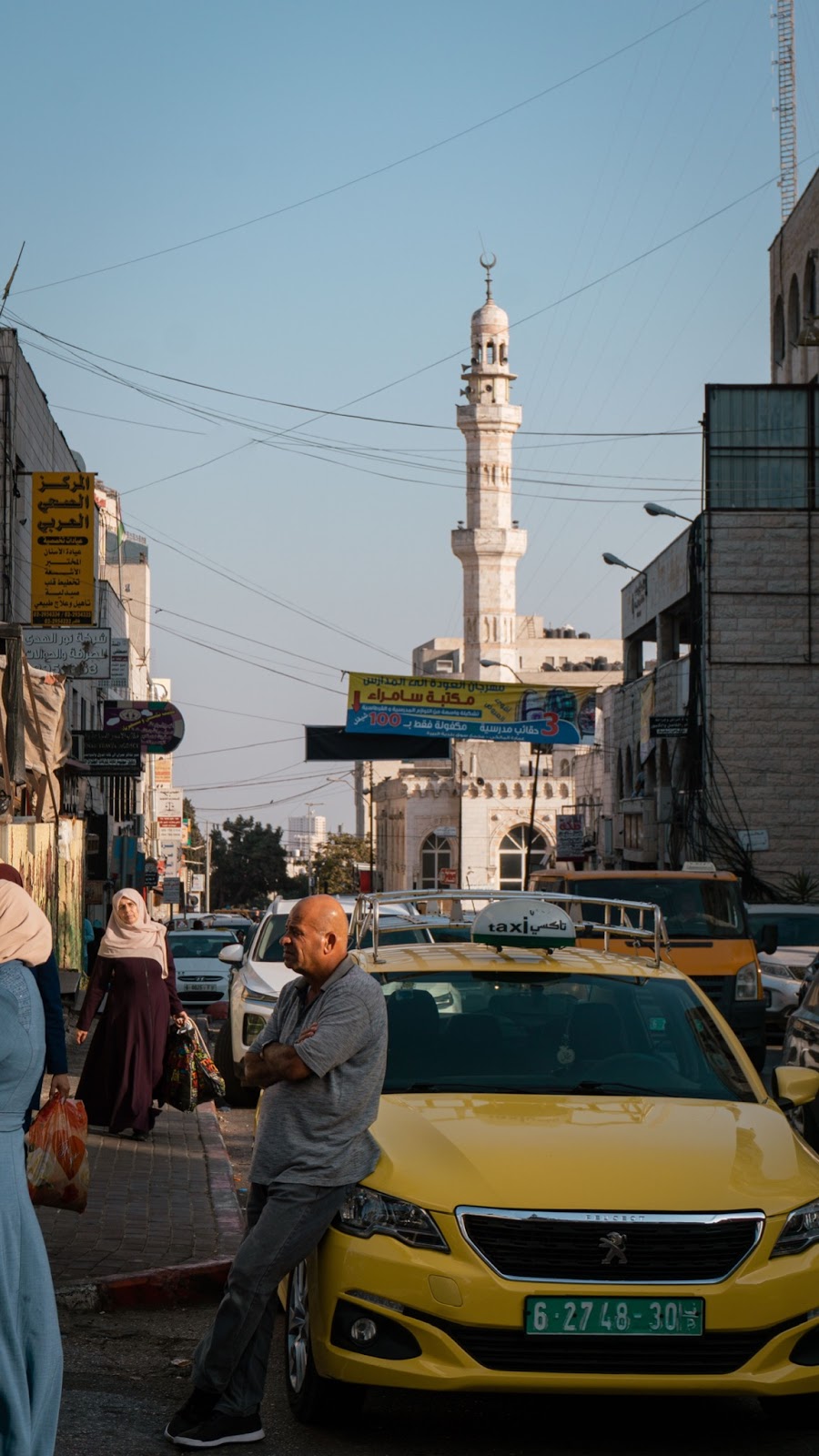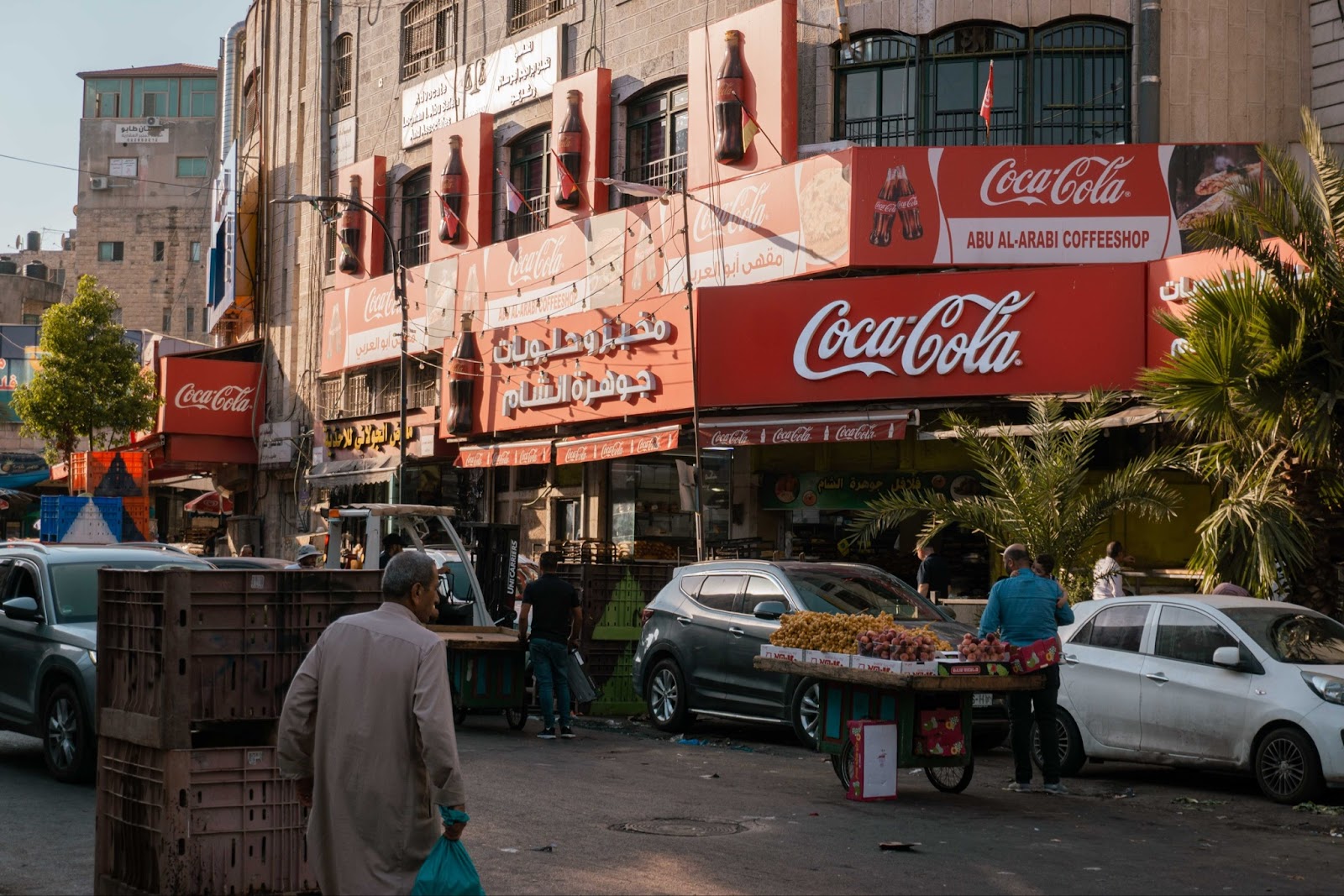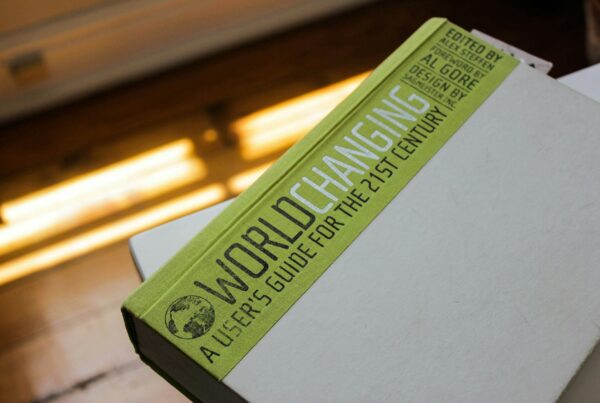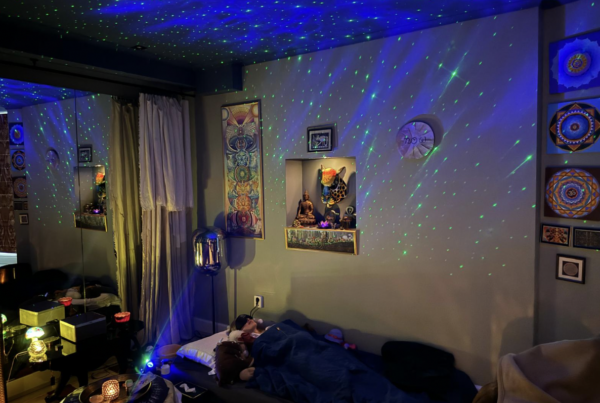
This summer I visited one of the most fascinating countries I’ve ever been to: Israel. A place full of excitement, history, but also tension. During my travels I also got the chance to spend a week in Palestine, reminding me that the region is after all shaped by one of the most prominent political conflicts of our time.

Photo by Jerónimo Leal González

Photo by Jerónimo Leal González
My week in Palestine not only showed me a region which is oftentimes overlooked by Western media but also how complicated encounters can become shockingly mundane. For the current article, I will try to provide you with a short historical overview and describe its impact on my week in Palestine and the interactions I had with Palestinians. This is meant to report my experience and is not an opinion piece regarding an incredibly intractable conflict.
First of all, we need a little bit of background information to fully understand the geopolitical situation in the area. Israel and Palestine are located in the Middle East along the eastern coastline of the Mediterranean Sea. Both parties have religious and historical claims on the land. The situation became more complex when the West decided to interfere. During World War I (WWI) France and England promised both Arabs in Palestine as well as European Zionists land in return for military support against the Ottoman Empire, which used to control the area back then. The conditions and terms of these promises were purposely kept vague. But when the war ended, France and England claimed the land for themselves. Both Arabs and Jews were left with the empty promise of owning all of Palestine. A promise which both are trying to fulfil to this day. Increased riots of the Arab population against the British mandate led to more and more tension in the region. This intensified due to the increased migration of European Jews, especially during WWII because of the Holocaust. With that, the necessity and legitimacy of a Jewish state increased immensely, leading the UN to the foundation of both states Israel and Palestine in 1948. Both Israelis and Palestinians were to share the land equally (Biger, 2004). But over the course of the 20th century, the borders of the two national groups have changed frequently. As of now, Israel occupies most of the Palestinian territories having the main administrative and executive control in the region. As a result, many Palestinians were forced to leave their homes and migrate to different parts of the region or abroad. To this day, over 1,5 million Palestinians are living in refugee camps (UN, 2020). Hopefully my experience is better understood taking this information into account.
“It is quite intimidating to see a wall, which is not only a tool to safeguard Israel but also sets the current border between the two states.”

Photo by Jerónimo Leal González
The easiest way to get to Palestine is via Tel Aviv airport. From there I took an express train to Jerusalem from where buses go daily to Bethlehem (Palestine). The bus stopped right at the border. To enter Palestine you need to pass a grey tunnel, illuminated with cold lights and a tense feeling. This corridor is one of many checkpoints that connects Israel with Palestine. Anyone who wants to come to the Westbank needs to pass it and requires certain travel documents, which are easily obtained by Israeli and Europeans. On the other side I was greeted by a wall. It was built by the Israeli government during the Second Intifada, the biggest Palestinian riot against the Israeli occupation, in order to protect the country against terrorists and attacks (Usher, 2005). It is quite intimidating to see a wall, which is not only a tool to safeguard Israel but also sets the current border between the two states.
When arriving in Bethlehem, it became apparent that public transport is more scarce. People mostly have a car or rely on taxis to get around. Although sidewalks are not always present, I decided to walk to my destinations. Thereby, I could observe my surroundings much better and noticed on the neighbouring hill of Bethlehem a big, modern settlement. Soon, I learned that this was one of many Israeli settlements in Palestine, where Zionists buy Palestinian land off of private people and build cities on that ground. This Israeli sovereignty in the Westbank offends Palestinians, therefore these settlements are guarded and walled up in order to protect citizens and to intimidate Palestinians. A Palestinian told me that he avoids getting too close to the settlements as the one time he didn’t, he got attacked by security and witnessed gunshots hissing by so close that he felt the rush of air on his skin. Tensions do not only exist in conflict regions close to borders and settlements, checkpoints or refugee camps, but also in everyday life. When I attended a party in Bethlehem during which we were hanging out on the balcony, all of the sudden someone said: ‘Let’s sit down. Our lives are still important to us after all’. I realised they wanted to prevent a potential shooting from ending the party.
“Tensions do not only exist in conflict regions close to borders and settlements, checkpoints or refugee camps, but also in everyday life.”
When leaving Bethlehem, I again needed to pass the checkpoint. Unfortunately, I could not find my visa document at the border. After showing my European passport the border guards let me enter Israel without further questions asked. A privilege not everyone has. Palestinians need a permit issued by the Israeli government in order to enter and leave the territory. Since this also entails the access to the nearest airport, most Palestinians have never left the territory and have not been able to see the sea, which is only 50 km away from their home.
My week in Palestine showed me that there are different forms of normality. A sidewalk, feeling safe at a party, having the freedom to move safely in my country are definitely not normal. They are privileges. It also reminded me how there are multiple narratives to a story. Depending on what perspective you take, the story is told differently. It is incredibly difficult to report about the Israeli-Palestinian conflict and I am aware that I missed a lot of important information which would help to paint a more complete picture. But this goes beyond the scope of this piece. The emphasis lies on my subjective experiences which I wanted to share unfiltered. <<
References
– Assembly, U. G. (1947). United Nations Partition Plan for Palestine.
– Biger, G. (2004). The boundaries of modern Palestine, 1840-1947 (Vol. 1). Routledge.
– Hass, A. (2015, July 26). For Israel, it seems Goliath was the victim – Haaretz Com. Haaretz.com. https://www.haaretz.com/2015-07-27/ty-article/.premium/goliath-the-victim/0000017f-f46f-d487-abff-f7ffe7d10000
– Usher, G. (2005). Unmaking Palestine: On Israel, the Palestinians, and the Wall. Journal of Palestine Studies, 35(1), 25-43.
– United Nations (n.d.) Palestine Refugees. United Nations Relief Agency For Palestine Refugees in the Middle East https://www.unrwa.org/palestine-refugees
My week in Palestine not only showed me a region which is oftentimes overlooked by Western media but also how complicated encounters can become shockingly mundane. For the current article, I will try to provide you with a short historical overview and describe its impact on my week in Palestine and the interactions I had with Palestinians. This is meant to report my experience and is not an opinion piece regarding an incredibly intractable conflict.
First of all, we need a little bit of background information to fully understand the geopolitical situation in the area. Israel and Palestine are located in the Middle East along the eastern coastline of the Mediterranean Sea. Both parties have religious and historical claims on the land. The situation became more complex when the West decided to interfere. During World War I (WWI) France and England promised both Arabs in Palestine as well as European Zionists land in return for military support against the Ottoman Empire, which used to control the area back then. The conditions and terms of these promises were purposely kept vague. But when the war ended, France and England claimed the land for themselves. Both Arabs and Jews were left with the empty promise of owning all of Palestine. A promise which both are trying to fulfil to this day. Increased riots of the Arab population against the British mandate led to more and more tension in the region. This intensified due to the increased migration of European Jews, especially during WWII because of the Holocaust. With that, the necessity and legitimacy of a Jewish state increased immensely, leading the UN to the foundation of both states Israel and Palestine in 1948. Both Israelis and Palestinians were to share the land equally (Biger, 2004). But over the course of the 20th century, the borders of the two national groups have changed frequently. As of now, Israel occupies most of the Palestinian territories having the main administrative and executive control in the region. As a result, many Palestinians were forced to leave their homes and migrate to different parts of the region or abroad. To this day, over 1,5 million Palestinians are living in refugee camps (UN, 2020). Hopefully my experience is better understood taking this information into account.

Photo by Jerónimo Leal González
“It is quite intimidating to see a wall, which is not only a tool to safeguard Israel but also sets the current border between the two states.”
The easiest way to get to Palestine is via Tel Aviv airport. From there I took an express train to Jerusalem from where buses go daily to Bethlehem (Palestine). The bus stopped right at the border. To enter Palestine you need to pass a grey tunnel, illuminated with cold lights and a tense feeling. This corridor is one of many checkpoints that connects Israel with Palestine. Anyone who wants to come to the Westbank needs to pass it and requires certain travel documents, which are easily obtained by Israeli and Europeans. On the other side I was greeted by a wall. It was built by the Israeli government during the Second Intifada, the biggest Palestinian riot against the Israeli occupation, in order to protect the country against terrorists and attacks (Usher, 2005). It is quite intimidating to see a wall, which is not only a tool to safeguard Israel but also sets the current border between the two states.
When arriving in Bethlehem, it became apparent that public transport is more scarce. People mostly have a car or rely on taxis to get around. Although sidewalks are not always present, I decided to walk to my destinations. Thereby, I could observe my surroundings much better and noticed on the neighbouring hill of Bethlehem a big, modern settlement. Soon, I learned that this was one of many Israeli settlements in Palestine, where Zionists buy Palestinian land off of private people and build cities on that ground. This Israeli sovereignty in the Westbank offends Palestinians, therefore these settlements are guarded and walled up in order to protect citizens and to intimidate Palestinians. A Palestinian told me that he avoids getting too close to the settlements as the one time he didn’t, he got attacked by security and witnessed gunshots hissing by so close that he felt the rush of air on his skin. Tensions do not only exist in conflict regions close to borders and settlements, checkpoints or refugee camps, but also in everyday life. When I attended a party in Bethlehem during which we were hanging out on the balcony, all of the sudden someone said: ‘Let’s sit down. Our lives are still important to us after all’. I realised they wanted to prevent a potential shooting from ending the party.
“Tensions do not only exist in conflict regions close to borders and settlements, checkpoints or refugee camps, but also in everyday life.”
When leaving Bethlehem, I again needed to pass the checkpoint. Unfortunately, I could not find my visa document at the border. After showing my European passport the border guards let me enter Israel without further questions asked. A privilege not everyone has. Palestinians need a permit issued by the Israeli government in order to enter and leave the territory. Since this also entails the access to the nearest airport, most Palestinians have never left the territory and have not been able to see the sea, which is only 50 km away from their home.
My week in Palestine showed me that there are different forms of normality. A sidewalk, feeling safe at a party, having the freedom to move safely in my country are definitely not normal. They are privileges. It also reminded me how there are multiple narratives to a story. Depending on what perspective you take, the story is told differently. It is incredibly difficult to report about the Israeli-Palestinian conflict and I am aware that I missed a lot of important information which would help to paint a more complete picture. But this goes beyond the scope of this piece. The emphasis lies on my subjective experiences which I wanted to share unfiltered. <<



